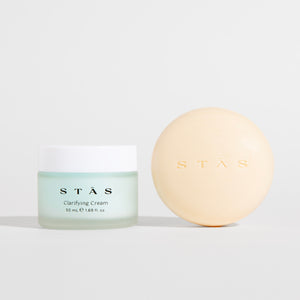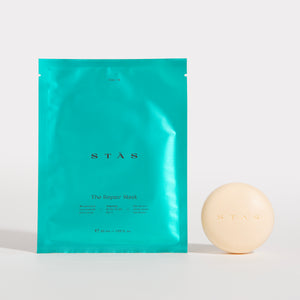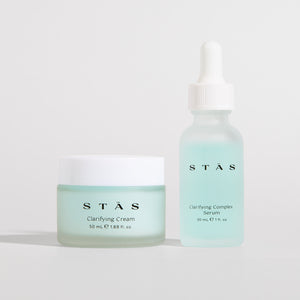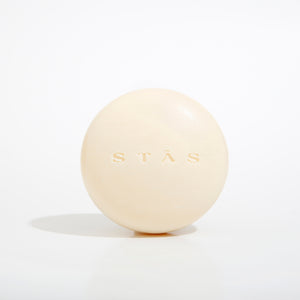Your Skin Uses 20 Amino Acids Daily. Most Products Only Give You 3
Sep 24, 2025
Your expensive serum has hyaluronic acid and vitamin C. Cool. But what about the 20 amino acids your skin uses every day to actually repair itself?
Look, I get it. You've done your research. You know peptides are good, retinol works, and niacinamide is having a moment. But here's what 20+ years of working with real skin has taught me: we've been thinking about skincare backwards.
Instead of asking "what trendy ingredient should I add next?" we should be asking "what does my skin actually need to function?"

And the answer isn't sexy. It's not going to get a million views on TikTok. But it works.
Your Skin Uses 20 Amino Acids (So Why Are Most Products Only Giving You 3?)
Your skin barrier—the thing that keeps irritants out and moisture in—is built from proteins like collagen, elastin, and keratin. And proteins are made from amino acids. All 20 of them.
Your body naturally produces and uses all 20 standard amino acids to maintain healthy skin. They're the building blocks that keep everything together.
Most skincare brands throw a few amino acids into their formulas and call it a day. Usually glycine or proline, because they're cheap and they sound science-y on an ingredient list.
But when we were developing our Repair Mask, Arthur (our wound-healing researcher) looked at this differently. Instead of asking "what amino acids should we add?" he asked "what amino acids does damaged skin need to repair itself?"
The answer? As many as possible. A comprehensive spectrum that actually supports your skin's natural processes.
The 16 Amino Acids in Our Formula (And What They Actually Do)
Here's what's actually in our Multi-Potent Stem Cell Activators (MPSCAs)—16 of the 20 amino acids your skin uses daily:
The Repair Squad:
- Glycine: Helps produce collagen and calm inflammation
- Proline: Critical for collagen structure and wound healing
- Hydroxyproline: Stabilizes collagen fibers (this one's rare in skincare)
- Arginine: Improves circulation and accelerates healing
The Protection Team:
- Cystine: Powerful antioxidant that protects against environmental damage
- Glutathione: The "mother of all antioxidants"—neutralizes free radicals
- Methionine: Supports the skin's natural detoxification process
The Hydration Heroes:
- Serine: Natural moisturizing factor that holds water in skin
- Threonine: Maintains skin barrier integrity
- Asparagine: Helps skin retain moisture
The Structure Builders:
- Leucine, Isoleucine, Valine: The branched-chain amino acids that support skin elasticity
- Phenylalanine: Precursor to important skin compounds
- Lysine: Essential for collagen cross-linking
- Tryptophan: Supports skin's natural renewal process
- Aspartic Acid: Helps with cellular energy production
Why Most Brands Skip the Comprehensive Approach
Simple: it's expensive and complicated.
It's much easier to add one amino acid, call it a "peptide complex," and charge premium prices. Most consumers won't know the difference, and the marketing writes itself.
But here's the thing—your skin knows the difference.
When you give your skin just a few isolated amino acids, it's like giving a construction crew only hammers and expecting them to build a house. Sure, hammers are important, but they also need screwdrivers, levels, measuring tape, and about 20 other tools.
Your skin works best when it has access to a comprehensive range of amino acids to support its natural repair processes.
The Wound-Healing Connection (AKA Why We're Different)
Most skincare brands approach formulation like this: "What ingredients are popular right now? How can we combine them?"
We approached it like this: "What does skin need to heal from damage? How can we activate those natural processes?"
That's the difference between cosmetic chemistry and wound-healing science.
When Arthur was researching tissue repair, he discovered that damaged skin doesn't just need one or two nutrients—it needs a comprehensive amino acid profile to rebuild properly. That's how our Endogenous Dermal Stem Cell Regenerative System (EDSCRS) was born.
Instead of trying to force your skin to do something unnatural, we're giving it 16 of the 20 amino acids it uses naturally to do what it already knows how to do: heal itself.
How to Spot Real Amino Acid Science vs. Marketing Fluff
Next time you're ingredient-list stalking (because I know you are), here's what to look for:
Red flags:
- Products that list "amino acid complex" without specifying which ones
- Formulas with only 2-3 amino acids mixed with a bunch of trendy actives
- Brands that focus more on packaging than ingredient transparency
Green flags:
- Comprehensive amino acid profiles (like our 16 of the 20 amino acids your skin uses)
- Brands that explain WHY each ingredient is there, not just what it does
- Formulations that prioritize skin barrier support over quick fixes
The Bottom Line
Your skin isn't broken. It's not deficient in the latest TikTok ingredient. It just needs comprehensive support with the amino acids it already uses naturally.
And while most brands are giving you 2-3 amino acids mixed with trendy actives, we're providing 16 of the 20 your skin actually works with every day.
While everyone else is chasing trends, we're giving your skin what it's actually been asking for all along.
Ready to give your skin comprehensive amino acid support? Our Repair Mask contains 16 of the 20 amino acids your skin uses naturally to repair, regenerate, and thrive. Because your skin deserves better than half-measures.







